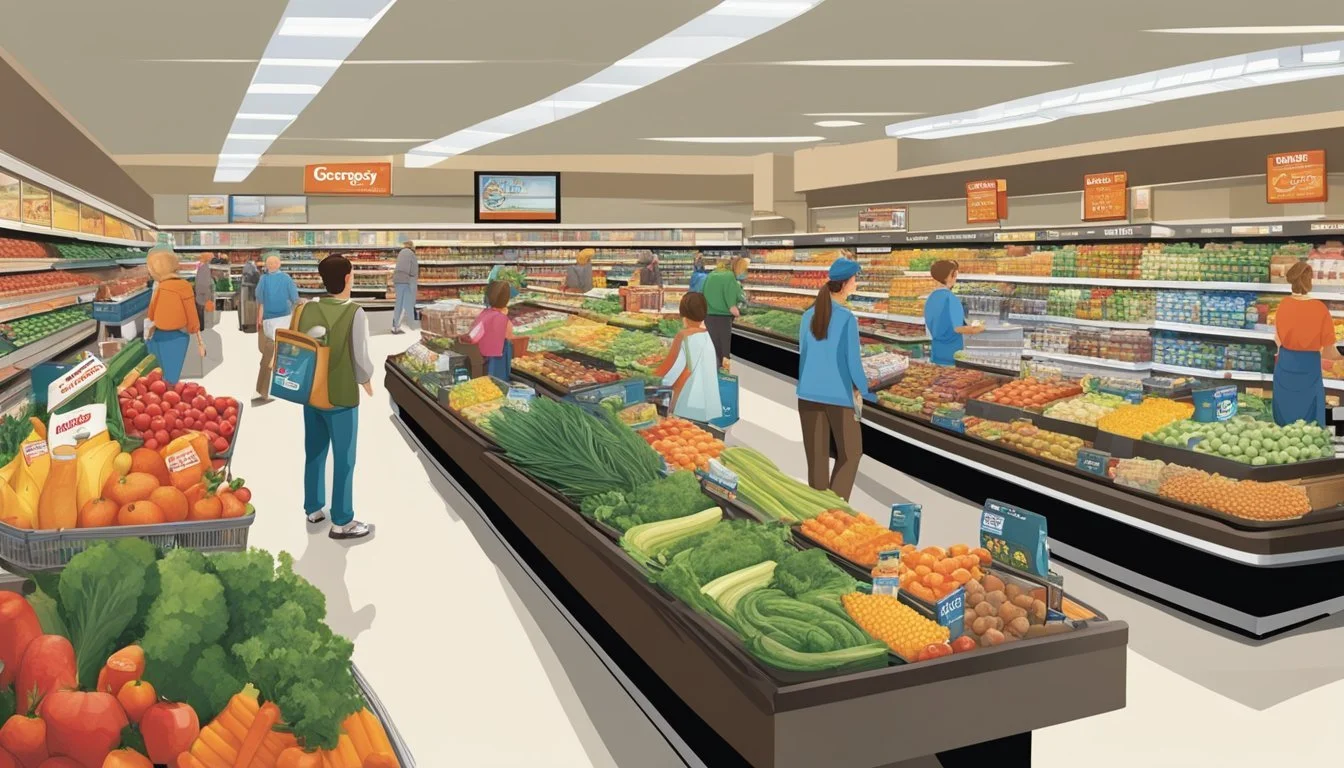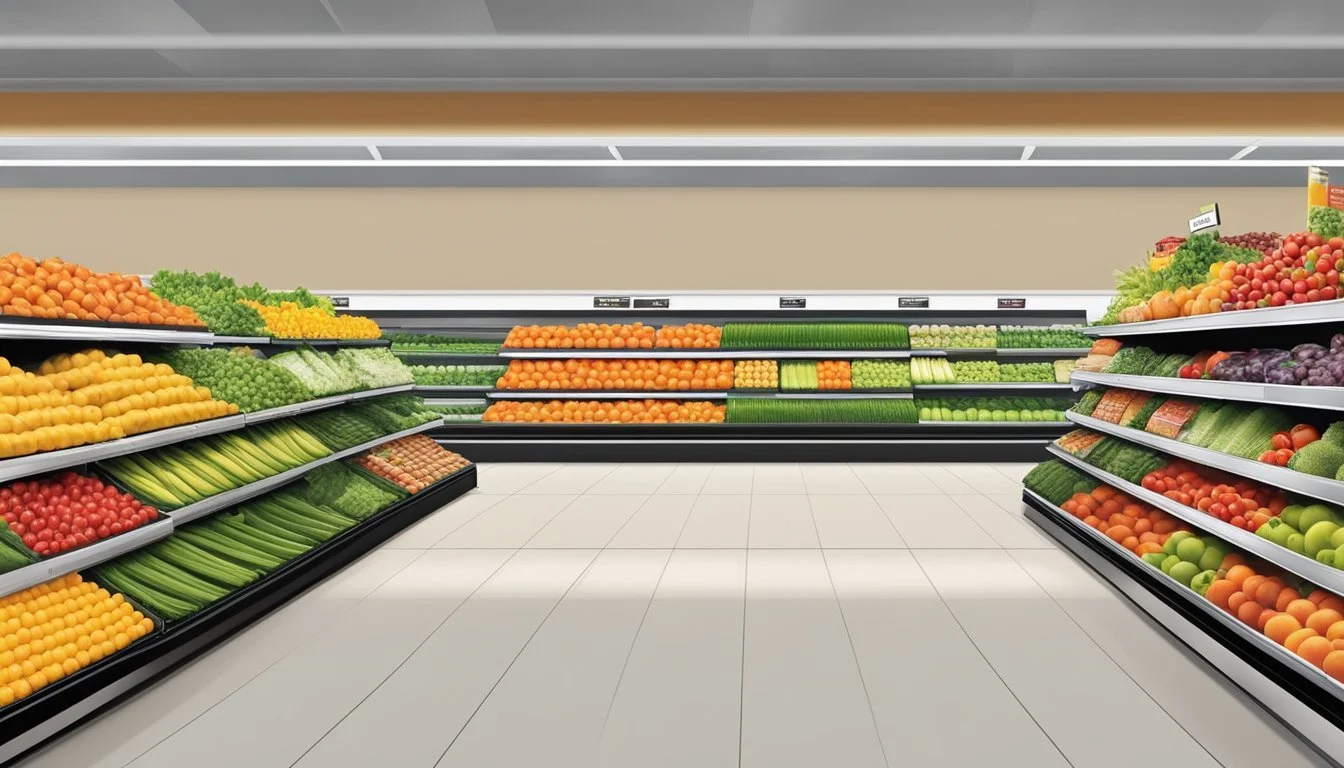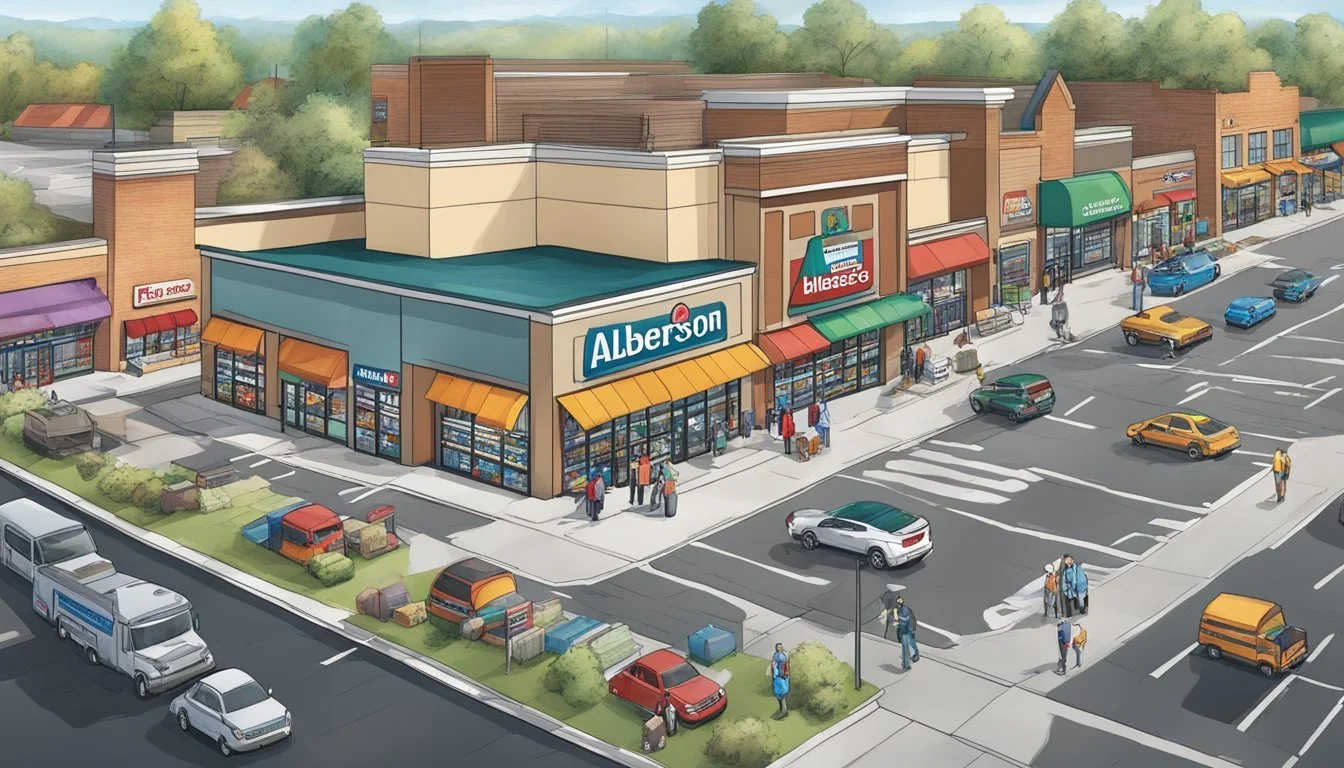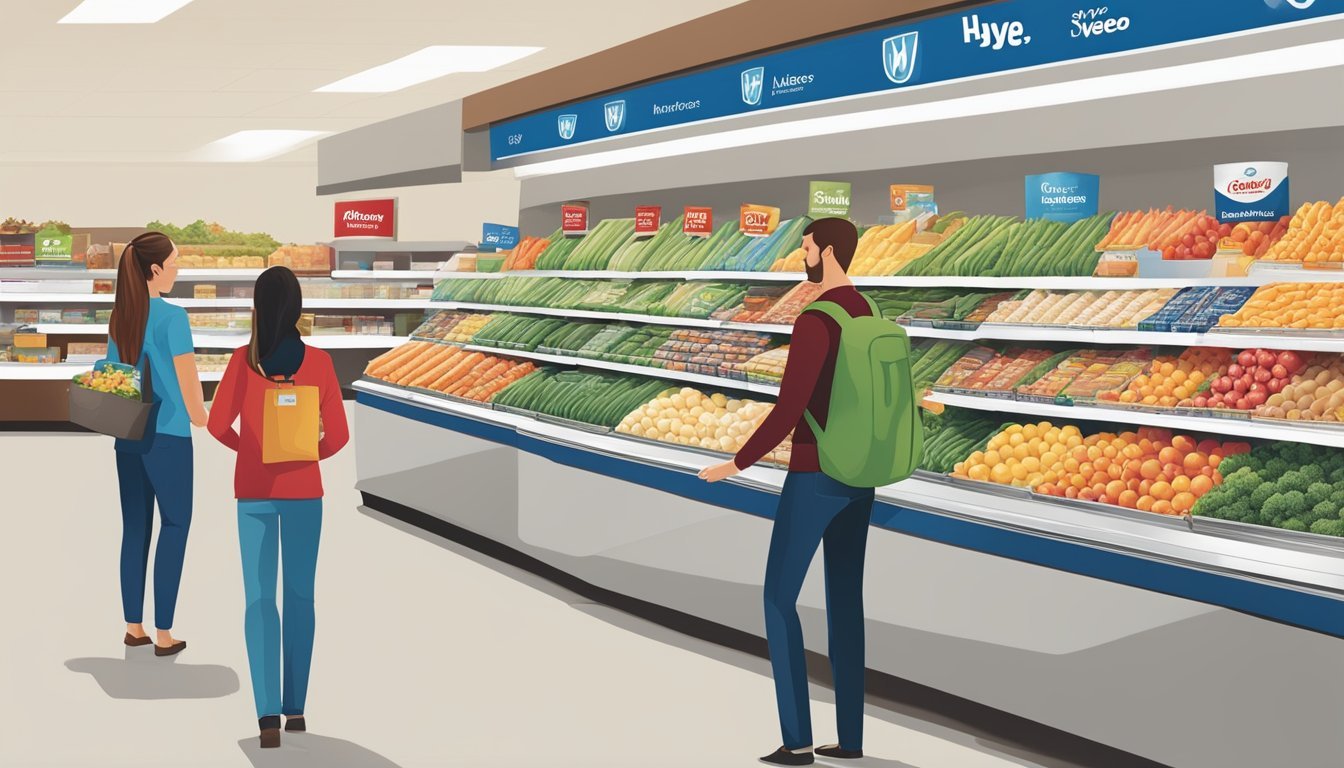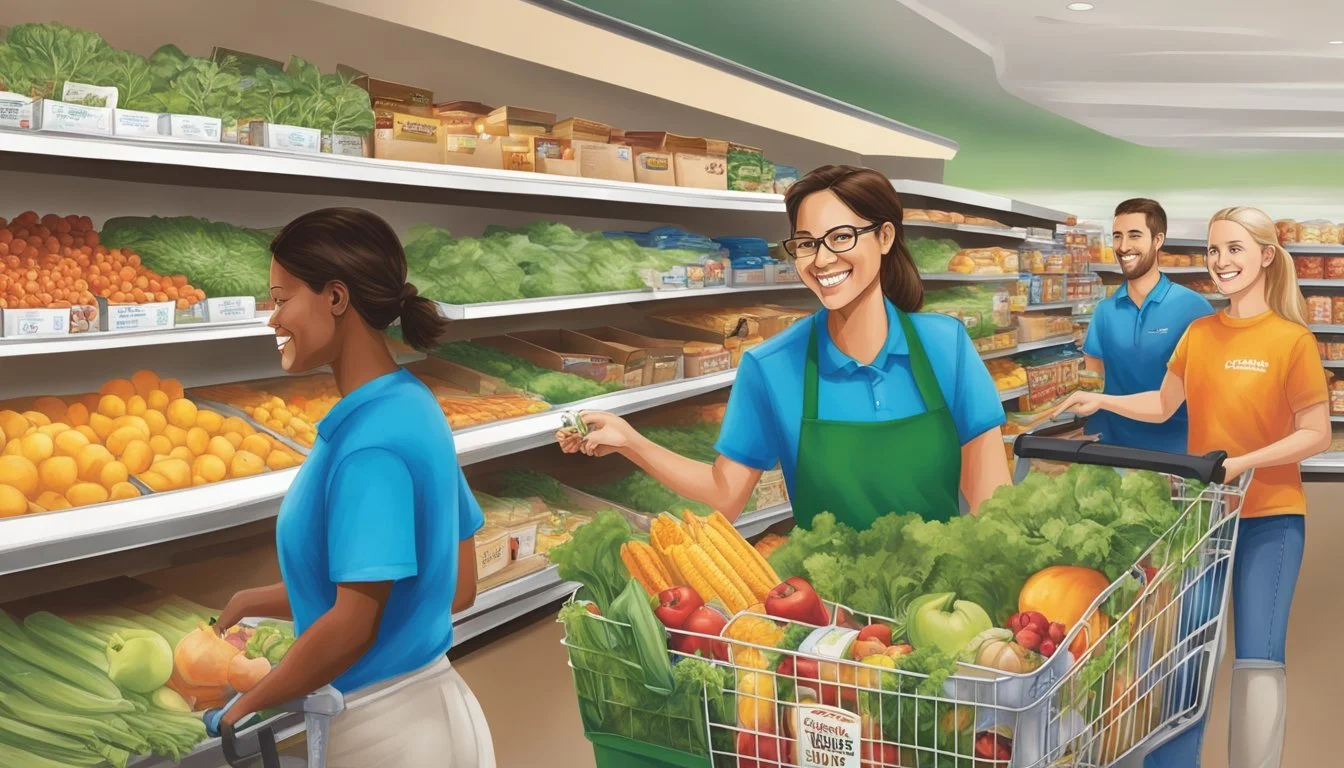Albertsons vs Hy-Vee
Comparing Shopping Experience, Prices, and Quality
Part of Our Grocery Store Guide with Details on Albertsons and Hy-Vee
When it comes to choosing a grocery store, shoppers often look for a blend of quality, variety, and value. Albertsons and Hy-Vee are two prominent grocery chains that have cultivated loyal customer bases across different regions of the United States. Albertsons, with a history dating back to 1939, has a strong presence in the western and southern parts of the country, while Hy-Vee, established in 1930, mainly serves the Midwest.
Both chains have distinct features that appeal to consumers. Albertsons is known for its wide assortment of goods, convenience services like pharmacies and in some locations, fuel centers, as well as its involvement in community-oriented programs. Hy-Vee, on the other hand, has built a reputation for customer service, clean stores, and a strong emphasis on healthful options, including dietitian services and health clinics in select locations.
The debate over which is better, Albertsons or Hy-Vee, often hinges on individual priorities such as local availability, product pricing, store brand quality, and the overall shopping experience. Price-sensitive shoppers have noted that while Hy-Vee offers competitive quality, its pricing has been less attractive compared to some competitors, a consideration that could sway budget-conscious consumers. On the contrary, Albertsons has been a part of discussions highlighting a diverse selection at competitive prices. Each store brings strengths to the table, making the choice between them dependent on the specific needs and preferences of the shopper.
History and Overview of Albertsons and Hy-Vee
The histories of Albertsons and Hy-Vee trace the evolution of two prominent supermarket chains from their humble beginnings to becoming significant players in the regional and national grocery store markets.
Albertsons' Background
Albertsons began in 1939 when Joe Albertson opened the first store in Boise, Idaho. This store was a game-changer of its time, known for introducing novel conveniences such as free parking and a money-back guarantee. Albertsons grew steadily, emphasizing customer service and innovation, a formula that made it a beloved family grocery store across multiple regions, eventually solidifying its status as a major supermarket chain.
Founded: 1939, Boise, Idaho
Founder: Joe Albertson
Innovations: Free parking, money-back guarantee, ice cream shop
Growth: Expanded beyond Idaho, becoming a significant supermarket chain
Hy-Vee's Background
Hy-Vee's story started in 1930 with Charles Hyde and David Vredenburg in a small brick building in Beaconsfield, Iowa. Hy-Vee prioritized autonomy for its stores, allowing them to select inventories and set prices, catering directly to the needs of local communities in the Midwest. The company is known for its employee ownership model, which was established in 1960, fostering a unique company culture focused on customer service and employee engagement.
Founded: 1930, Beaconsfield, Iowa
Founders: Charles Hyde and David Vredenburg
Unique Model: Employee-owned
Local Focus: Stores operate autonomously, tailoring to regional preferences
Store Layout and Shopping Experience
The design of a supermarket can significantly affect the shopping experience. Albertsons and Hy-Vee both offer unique layouts that are tailored to provide convenience and showcase the quality of their products, from fresh produce to store brand items.
Albertsons' Store Design
Albertsons typically maintains a traditional supermarket layout that prioritizes ease of movement and product accessibility. Their stores are designed with the following characteristics:
Produce: Upon entering, customers usually find a wide selection of fresh produce, signaling quality and freshness.
Meat and Deli: The meat and deli sections are often strategically placed to allow easy progression from produce to protein selections.
Baked Goods and Dairy: Albertsons' bakeries and dairy sections are prominently featured, ensuring customers find everyday essentials efficiently.
Convenience: Aisles are distinctly labeled, and store brands are well positioned to stand out against national brands, providing convenience for shoppers looking for specific items or simply browsing.
Hy-Vee's Store Design
Hy-Vee has been reimagining its store layout to enhance the customer shopping experience using technology and offering a greater variety of services:
Produce: The stores showcase fresh produce, with some new locations incorporating all-digital shelf labels for pricing, which reflects their tech-forward approach.
Meat and Cheese: Meat and specialty cheese selections are expanded, offering a diverse range to customers focused on quality.
Deli and Prepared Foods: A reimagined layout may include a larger focus on prepared foods, catering to health-minded and on-the-go consumers.
Baked Goods and Dairy: With the addition of expanded departments, customers can expect a higher emphasis on bakery items and a robust dairy section.
Store Brand and Convenience: Hy-Vee emphasizes an enhanced foodservice and high-tech shopping experience, aiming to create a convenient grocery experience and a point of difference with its store brand and other offerings.
By integrating technology and thoughtful design, both Albertsons and Hy-Vee strive to provide a shopping experience that is convenient, efficient, and tailored to customer needs.
Product Selection and Quality
When comparing Albertsons and Hy-Vee, it is important to evaluate their product selection and quality, with a particular focus on their range of produce, meats, and organic offerings.
Albertsons' Product Range
Albertsons offers a wide array of groceries, including fresh produce, meats, and a variety of pantry staples. Customers can find a substantial selection of high-quality produce and meats at Albertsons, with both conventional and organic options available. The store prides itself on supplying fresh and diverse produce and has a reputation for stocking a broad assortment of goods to cater to its customers' needs.
Produce: Freshness and variety are key at Albertsons, with a strong emphasis on high-quality produce.
Meats: They offer a range of meats from standard cuts to more specialized selections, emphasizing quality and freshness.
Organic: Albertsons has responded to the growing demand for organic products, steadily increasing their organic produce and grocery choices.
Hy-Vee's Product Range
Hy-Vee boasts an impressive selection of groceries, known for its focus on fresh, quality products. They also offer a robust inventory of meats, fresh produce, and organic produce that cater to a range of dietary preferences and needs. Their commitment to quality is evident in their produce and meat departments, where they emphasize freshness and quality.
Produce: Hy-Vee sources a diverse array of high-quality fruits and vegetables, with a spotlight on freshness and organic produce.
Meats: A varied selection of quality meats, including specialty and premium cuts, are a fixture at Hy-Vee.
Organic: Acknowledging the importance of organic options, Hy-Vee offers an extensive lineup of organic grocery items along with their conventional counterparts.
Price Comparison and Value for Money
When evaluating grocery stores, consumers consider both price and the value they receive. Albertsons and Hy-Vee offer different pricing strategies that influence how consumers perceive their value for money.
Albertsons' Pricing Strategy
Albertsons tends to position itself as a supermarket offering a mix of value and convenience. Prices at Albertsons may vary depending on the location and whether an item is a part of a promotional sale or a loss leader—a product sold at a loss to attract customers. Albertsons frequently offers sales on generic staples, which can lead to cost-savings for consumers focused on finding lower prices on everyday items.
Hy-Vee's Pricing Strategy
Hy-Vee's approach to pricing is to provide a beneficial shopping experience, with a focus on customer service and quality. While their prices might be slightly higher on average compared to Albertsons, Hy-Vee often promotes savings through loyalty programs and special discounts. They also use loss leaders strategically to bring customers into the store, with the intent that they will purchase additional higher-margin items.
Both stores regularly adjust their pricing to compete within their respective markets. Consumers may find that the price difference between the two is contingent on specific promotions, availability of store brands, and location-specific deals.
Customer Service and Shopping Satisfaction
When evaluating supermarkets, customer service and shopping satisfaction are pivotal factors that influence consumer loyalty and brand reputation. Recent surveys and ratings provide quantifiable insights into how Albertsons and Hy-Vee perform in these areas, allowing consumers to make informed decisions based on service standards and the overall shopping experience.
Service Standards at Albertsons
Albertsons has a consumer rating that reflects a commitment to service, with improvements noted in recent years. Researchers have captured the voice of Albertsons' customers, indicating an increase in satisfaction. The store has a strong presence in the market and offers a variety of store brands that meet the diverse needs of area consumers. The rating of 74 out of 100 in a recent American Customer Satisfaction Index (ACSI) signifies that Albertsons is making strides but still has room for growth when it comes to customer service.
Service Standards at Hy-Vee
In contrast, Hy-Vee boasts a slightly higher rating with a strong emphasis on customer satisfaction. Their score of 76 out of 100 in the same ACSI survey illustrates a consistent performance above average. Hy-Vee's dedicated customer base speaks to their ability to maintain high service standards. The supermarket is often recognized for the staff's attentiveness and the positive shopping experience they provide, reinforcing their loyal following.
Locations and Geographic Reach
When considering Albertsons and Hy-Vee, their geographic reach differs significantly, with Albertsons having a widespread presence, while Hy-Vee primarily serves the Midwest.
Albertsons' Store Locations
Albertsons operates a notable number of stores across the United States. With a strong presence on the West Coast, particularly in cities like Los Angeles and San Francisco, the supermarket chain also has locations scattered in the Northwest, including Seattle. The company's stores offer a variety of grocery items and are designed to meet the needs of families seeking a comprehensive supermarket experience. Albertsons' geographic reach extends beyond the Pacific regions, although it is not as densely populated in areas like Chicago and Philadelphia, where other regional stores might have a stronger presence.
Hy-Vee's Store Locations
Hy-Vee maintains a focused presence in the Midwest, with over 265 stores catering to that region. It emphasizes access to quality goods at a medium price level, resonating with Midwestern families looking for a balance between cost and quality. The chain has not expanded as far as Albertsons in terms of national presence, but within its operational area, which does not include coastal cities like Los Angeles or San Francisco, Hy-Vee is seen as a mainstay grocery store—one that understands and serves the needs of its regional customers well. Its supermarkets are a familiar sight in many Midwestern cities, though they may not be found in vast metropolitan areas outside this region.
Brand Perception and Market Position
In the competitive landscape of grocery stores, brand image and market position play critical roles in attracting and retaining customers. Albertsons and Hy-Vee stand out as major players, each with unique strategies and customer perceptions.
Albertsons' Brand Image
Albertsons operates as a well-established supermarket chain with a widespread presence across the United States. With its commitment to convenience, product variety, and customer service, Albertsons has cultivated a strong market position. It maintains a loyal following by offering an expansive range of products and services, including groceries and pharmacy items.
Hy-Vee's Brand Image
Hy-Vee has differentiated itself with a focus on health and customer experience. Known for its innovative approach to the supermarket format, it has developed multiple store concepts to cater to evolving consumer preferences. The brand resonates with shoppers through its community engagement and personalized shopping experience, although it is recognized to a lesser extent compared to giants like Albertsons.
Loyalty Programs and Customer Engagement
When it comes to grocery shopping, loyalty programs are pivotal in shaping customer engagement and retainment. Albertsons and Hy-Vee each offer unique value propositions through their rewards systems, enticing customers to return, and fostering a loyal following.
Albertsons' Customer Rewards
Albertsons operates a loyalty program which has grown significantly, boasting a 45% enrollment increase on a two-year stack, reaching 30 million members. Their strategy hinges on driving engagement by offering a variety of incentives. Frequent shoppers at Albertsons might find themselves benefiting from:
Monetary savings: Customers earn points that lead to discounts on groceries and gas.
Exclusive deals: Members may receive personalized offers based on their shopping history.
Convenience factors: Encouraging frequent visits as repeated interactions are believed to be a strong loyalty builder.
Albertsons focuses on understanding consumer habits through their loyalty cards, enabling better-targeted promotions and improved customer experience.
Hy-Vee's Customer Rewards
Hy-Vee's loyalty program has been enhanced to integrate offerings across their food and fuel sectors, aiming to incentivize cross-departmental purchases. Notable aspects of Hy-Vee's loyalty program include:
Point-based rewards: Customers accumulate points through purchases that can be redeemed for discounts.
Fuel savings: Points can often be converted into discounts at Hy-Vee fuel centers.
Tailored experiences: Hy-Vee places a premium on customer-first shopping experiences, which may lead to higher customer satisfaction and retention rates.
By investing in loyalty, Hy-Vee attempts to surpass the average expectations, potentially rivaling programs like Amazon Prime in terms of dedicated prime discounts and benefits. A survey of customer satisfaction could possibly reveal how these efforts pay off in terms of shopper loyalty.
Online Presence and Digital Shopping Options
Major grocery chains have recognized the importance of a robust online presence, with Albertsons and Hy-Vee making significant advancements in their e-commerce platforms. These advancements address the growing demand for grocery delivery options, making the online shopping experience as seamless as possible.
Albertsons' E-Commerce Platform
Albertsons has made notable strides in enhancing its digital sales capabilities. The company reported a substantial increase in its digital sales — 243% in the second quarter of fiscal 2020. They have implemented an AI-powered application that streamlines the grocery shopping experience for customers. The platform provides real-time answers to common questions such as delivery service details, item availability, order tracking status, and store hours. This indicates that Albertsons has heavily invested in the efficiency of its checkout process and overall online user experience to meet the needs of a rapidly evolving digital consumer base.
Hy-Vee's E-Commerce Platform
Hy-Vee has partnered with Uber to expand its grocery delivery options across the Midwest, showcasing their commitment to improving online accessibility. This collaboration brings more than 260 stores into the digital marketplace, offering both on-demand and scheduled delivery services. Moreover, Hy-Vee has focused on integrating technology into their physical stores with features such as all-digital shelf labels, which align with their goal to provide a more tech-focused shopping environment, potentially reflecting the sophistication of their online presence.
Corporate Responsibility and Community Involvement
Grocery stores play a pivotal role in shaping the communities they serve. Corporate responsibility practices, led by company CEOs, are crucial in determining the impact these stores have. Both Albertsons and Hy-Vee have established community initiatives to address various societal needs.
Albertsons' Community Initiatives
Albertsons operates with a focused commitment to community improvement. The grocery store chain actively engages in hunger relief programs, partnering with local organizations across multiple states. Under the leadership of its CEO, Albertsons recognizes the importance of addressing food security.
"Nourishing Neighbors": A key program aimed at combating food insecurity, especially focusing on children and senior citizens.
Environment: Albertsons focuses on sustainability efforts, including waste reduction and promoting reusable product options.
Education Support: Albertsons funds scholarship programs supporting students in achieving higher education goals.
Hy-Vee's Community Initiatives
Hy-Vee's dedication to corporate responsibility and community involvement manifests in various actionable programs. A culture of giving back is evident, and following the CEO's direction, Hy-Vee demonstrates this commitment through multiple initiatives.
"A Helpful Smile in Every Aisle": Beyond just a slogan, it underscores Hy-Vee's philosophy of customer and community care.
Healthcare: Hy-Vee's outreach includes efforts in health care support, promoting wellness and preventive care.
Environmental Stewardship: Hy-Vee ensures sourcing of 100% fresh and frozen seafood from environmentally responsible methods, showcasing a commitment to global sustainability.
Arts and Education: Support for the arts and education is integral to Hy-Vee’s community-focused identity.
Comparison with Other Grocery Chains
When comparing Albertsons and Hy-Vee, it's essential to consider how they stack up against prominent national grocery chains. Shopping experience, pricing, and quality of products are typically the focal points of such comparisons.
Albertsons vs National Chains
Albertsons competes aggressively with larger national chains such as Walmart and Kroger in terms of product variety and availability. Unlike Walmart, which excels in pricing due to its vast scale, Albertsons offers a more conventional supermarket experience. Albertsons' pricing may be higher compared to Costco and Walmart, yet it often features extensive promotional deals, aligning it closer to Safeway and Publix in terms of shopper value.
In contrast to specialty retailers such as Whole Foods Market or Sprouts Farmers Market, Albertsons doesn't focus primarily on organic and natural products, but they do maintain a selection of these items. Compared to Food Lion and Kroger, Albertsons provides a comparable shopping experience but varies greatly in presence across regions.
Hy-Vee vs National Chains
Hy-Vee distinguishes itself from national chains through its strong Midwest presence, customer service, and focus on community. It typically offers a more personalized shopping experience compared to Walmart or Target. Price-wise, Hy-Vee is often comparable to Kroger but can be more expensive than warehouse stores such as Costco and Sam's Club.
While not as large as major national players like Walmart and Kroger, Hy-Vee holds its own with a blend of competitive pricing and quality seen at chains like Giant and Meijer. Unlike Whole Foods Market or Sprouts, known for their specialty and organic offerings, Hy-Vee provides a wide range of products that caters to a broader audience, similar to Stop & Shop and Jewel-Osco.
Hy-Vee's strategy to maintain quality and service places it in a niche that is not directly comparable to discount-focused stores such as Grocery Outlet and Aldi, but it reflects the practices of traditional supermarkets like Publix and Wegmans.
Conclusion
When evaluating Albertsons and Hy-Vee, shoppers have distinct choices based on their priorities. Hy-Vee, a mid-sized regional player, offers a robust selection of house-brand products that often undercut national brands on price. It operates around 265 stores across eight states, suggesting a strong regional presence.
Albertsons, on the other hand, competes with a broader national footprint and a range of budget to premium options. Their extensive network may provide convenience but reports indicate that they may rank lower on fresh produce and meat quality compared to smaller operators.
Price-conscious consumers may lean towards Albertsons where wallet-friendly options are a priority. Hy-Vee's strengths lie in its store-brand offerings and potential for regional product specialization. For those prioritizing a narrower focus on quality, or residing in the Midwest, Hy-Vee may be the preferable choice.
Comparison Aspect Albertsons Hy-Vee Store Count Larger Chain Regional Presence Price Generally Lower Competitive Discounts on Store Brands Quality Varies; some lower ratings for fresh produce/meat Potential for regional specialization
Shoppers should weigh these factors against personal shopping criteria – including location, product selection, and pricing preferences – to choose the store that best meets their needs.


